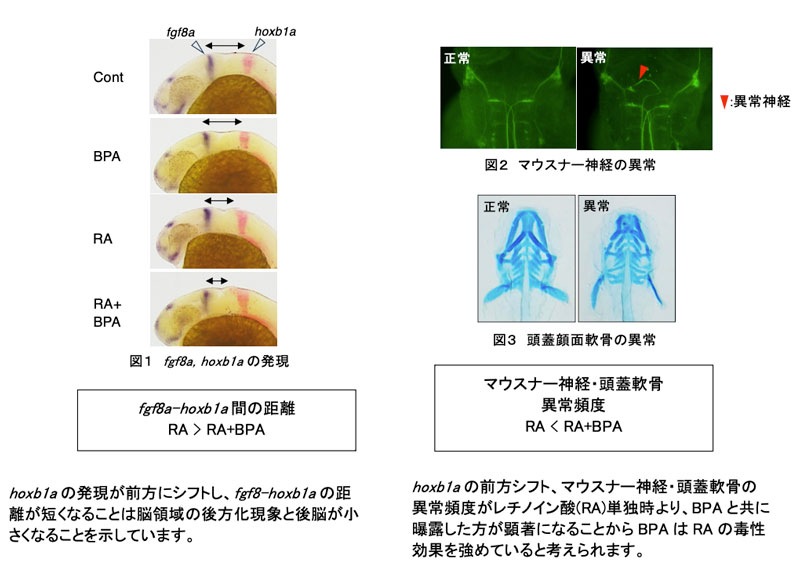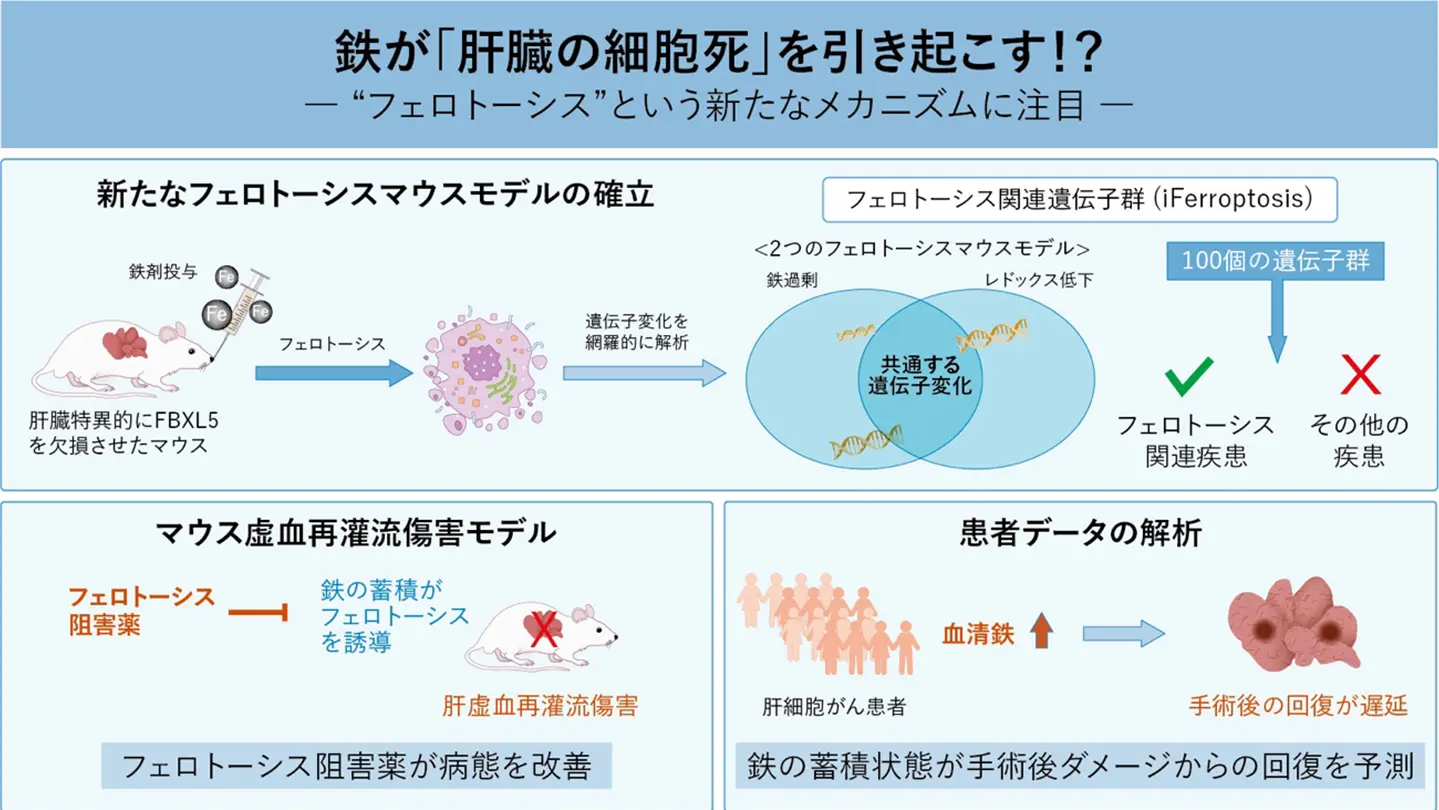2025-05-30 京都大学

<関連情報>
- https://www.kyoto-u.ac.jp/ja/research-news/2025-05-30-0
- https://www.kyoto-u.ac.jp/sites/default/files/2025-05/web_2505_Hirasawa-5d707f86ec1ee273e6546137fa9bce08.pdf
- https://ehp.niehs.nih.gov/doi/10.1289/EHP15574
ビスフェノールAとレチノイン酸曝露が神経細胞と脳の形成に及ぼす影響:ヒト人工多能性幹細胞とゼブラフィッシュ胚を用いた研究 Effects of Bisphenol A and Retinoic Acid Exposure on Neuron and Brain Formation: a Study in Human Induced Pluripotent Stem Cells and Zebrafish Embryos
Tomomi Nishie, Tomoki Taya, Shunichi Omori, Kenya Ueno, Yoshinori Okamoto, Shogo Higaki, Marina Oka, … , and Tatsuyuki Takada
Environmental Health Perspectives Published:13 May 2025
DOI:https://doi.org/10.1289/EHP15574
Abstract
Background:
Developing human fetuses may be exposed to the chemical compound bisphenol A (BPA), and retinoic acid (RA) has been detected at low levels in water sources. RA signaling regulates key developmental genes and is essential for organ development, including the brain. We previously reported that RA/BPA co-exposure of mouse embryonic stem cells potentiates RA signaling, which warrants further investigation.
Objective:
This study was undertaken in human induced pluripotent stem cells (iPSCs) and zebrafish embryos to investigate whether co-exposure to BPA and exogenous RA could potentiate HOX gene expression and exert pleiotropic effects on RA signaling.
Methods:
Human iPSCs and zebrafish embryos were exposed to exogenous RA (0, 7.5, 10, or 12.5 nM) or BPA (20 µM) alone or co-exposed to BPA (2 nM–20 µM) and exogenous RA (7.5–100 nM). Post-exposure changes in HOX genes were assessed by quantitative polymerase chain reaction and/or transcriptome analyses. RA receptor antagonists were used to identify the receptor responsible for signaling. In zebrafish, spacial expression of fgf8a and hoxb1a was evaluated by whole-mount in situ hybridization. Mauthner cell and craniofacial cartilage anomalies were studied by immunostaining and Alcian blue staining, respectively. Transcriptome was compared between iPSCs and zebrafish to identify alterations of common biologic processes. Gradient curves of RA signal were calculated to simulate the effects of exogenous RA and BPA in zebrafish.
Results:
In both iPSCs and zebrafish, RA/BPA co-exposure had higher expression of 3′ HOX genes compared to RA alone; BPA alone had no effect. Addition of RA receptor antagonists abolished these changes. In zebrafish, RA/BPA co-exposure, compared to RA alone, resulted in a significant rostral shift in hoxb1a expression and increased rate of anomalies in Mauthner cells and craniofacial cartilage. Transcriptome comparison and correlations between the experimental results and gradient curve simulations strengthened these observations.
Conclusion:
Our findings suggested a mechanistic link between chemical exposure and neurodevelopmental impairments, and demonstrated involvement of exogenous RA signaling in endocrine disruption. Further investigation is needed to explore why BPA alone did not affect endogenous RA signaling, whereas exogenous RA signaling was potentiated with RA/BPA co-exposure. https://doi.org/10.1289/EHP15574


